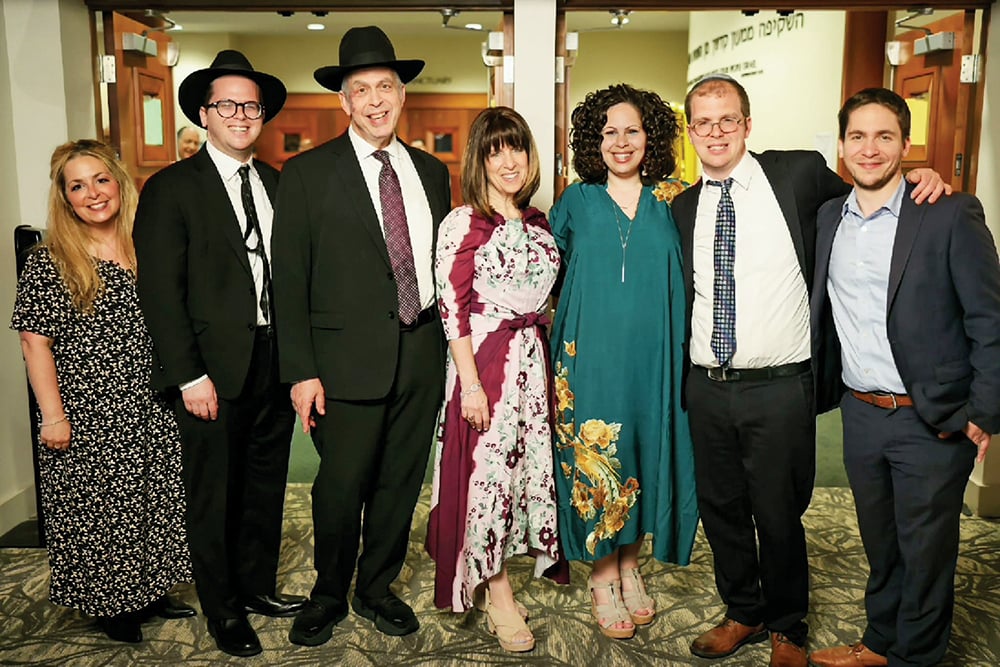Living in the vicinity of New York City affords us the opportunity to frequently travel across bridges traversing the Hudson and East Rivers. Traveling to the Five Towns entails crossing the George Washington or the Tappan Zee, and then the Whitestone, Throgs Neck or Triboro. Going into Brooklyn entails using the Brooklyn or Manhattan Bridge, or, possibly, one of the tunnels. Staten Island is connected to the world with the Verrazano Narrows Bridge or the (very narrow) Goethals and Bayonne Bridges. Every afternoon—during my drive up to New Windsor—I pass the beautiful Bear Mountain Bridge, further up the Hudson River.
As a young child, I had a deep fear of bridges. Whenever I would be in the car, and we would drive across a bridge I would bury my head in my lap until we were off the bridge (and it was not because of my father’s driving). I always feared that the bridge would collapse, and the vast water below looked very frightening. (The truth is that if you’re ever stuck in traffic on a bridge, a slight unnerving sway is somewhat palpable as cars and trucks breeze by from the opposite traffic.)
As I grew older, I became excited by bridges. I enjoy their majestic presence and the stunning views as well. As the construction of the lengthy Tappan Zee Bridge progressed from 2012-2018—not far from our home—we were able to witness some of the incredible detail and engineering brilliance necessary for constructing a bridge.
The truth is—as expensive and challenging as it is to construct a bridge across water—it is far more arduous and challenging to build bridges between people and nations. What makes people so fascinating and life so interesting is the fact that we are all unique and different. But we seem to have a very hard time respecting those differences.
Bridges do not remove the massive abyss that separates two bodies of land, but rather, create specific points of connection. In a similar vein, sometimes our disagreements with other people or groups are valid, and we may not have the authority to overlook or forgive those differences. But we can always focus more on our commonalities than those differences.
This past week, we celebrated Lag BaOmer. As we resume listening to music, shaving and taking haircuts, it behooves us to remember why we have been mourning. This period was, originally, dedicated as one of joy in anticipation of Kabbalas HaTorah. It was transformed into a time of mourning and introspection, because of the tragic deaths of Rabbi Akiva’s 24,000 students. The Gemara relates that the root cause of their death was because they did not adequately respect each other. In a sense, they were unable to construct strong enough bridges between each other.
Think about what life around here would be like without our bridges. When we are too focused on our points of contention, we cannot focus on our points of connection. The result is isolation and animosity—the source of our continuing exile.
When a fire is raging, it warms and serves as a source of illumination for everyone who draws near it, no matter the person’s external appearance and even his internal views. The fires of Lag BaOmer, which contain the flames of spiritual connection, embrace and warm the souls of every Jew. Lag BaOmer is a day when bridges are constructed. It is, therefore, a day of tremendous joy; joy which serves as the key to our final preparation for reaccepting the Torah on Shavuos.
Rabbi Dani Staum, LMSW, is a popular speaker and author. He is a rebbe in Heichal HaTorah in Teaneck, NJ, and an experienced therapist, recently returning to seeing clients in private practice, as part of the Rockland CBT group. For appointments, Rabbi Staum can be reached at 914-295-0115. Looking for an inspirational and motivating speaker or scholar-in-residence? Contact Rabbi Staum for a unique speaking experience. Rabbi Staum can be reached at [email protected]. Archives of his writings can be found at www.stamtorah.info.










